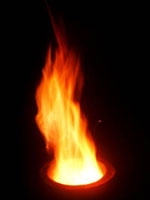
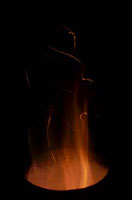
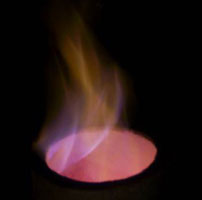
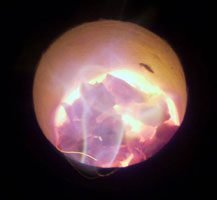
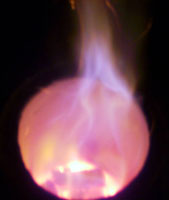
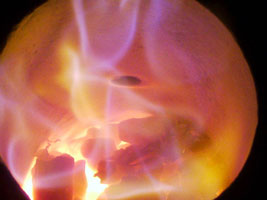
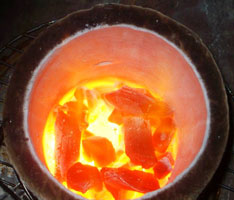
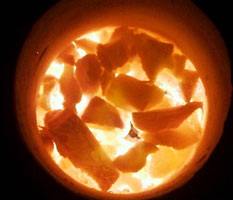
Charcoal Stove Prototype
Kobus Venter, Venter Forestry Services, South Africa March 2003
Here are some photos taken of my charcoal-gasifying stove consisting of the ceramic combustion chamber, without the steel body and vermiculite insulation.
My aim from the onset was to design an efficient charcoal stoves safe to use indoors as opposed to developing an efficient charcoal stove to reduce the dependence on charcoal and minimizing the impact on the natural resources from which it is made. Charcoals in South Africa are normally made from invader hardwoods (jungles occurring in water catchments) or commercially regenerated crops of the same alien species.
I have come to realize (from the testing of 2 prototypes amongst users) that urban communities have a need for a transitional modern fuel that is affordable and safe. Charcoal is affordable when used in my stove, due to the small amounts it uses and it does improve their way of life.
Stove Description
I think you could call it a batch feed, top lighted, ceramic lined charcoal stove, based on Tom Reed's IDD gasifier and the Rocket Stove. It consists of a 40cm high (15.75") "riser sleeve", 140mm (5.5 inch) inside diameter, with uncontrolled (constant) primary air entering through 6 (1 inch) holes in the bottom (also ceramic). Cross sectional area at exit point=154cm2 (0.17ft2), cross sectional area of inlet holes (total) =30.4cm2 (0.032 ft2).
As far as the body goes: 25L drum(0.38mm) on a stand, red oxide undercoat, ±45cm high, with a pot stand on top, and vermiculite compacted in between body and "riser".
Burning Charcoal
I made two holes (3/4 inch) halfway up the ceramic sleeve (above the level of the fuel) to provide secondary air, as advised by Crispin Pemperton-Piggot. I drilled them directly in line with each other approximately 180mm down. The secondary air is somewhat heated by the hot combustion chamber as it passes through the holes.
A batch load of 400g of charcoal (75% carbon) burns as follows:
On average I would have to say that it gasifies and oxidizes 250 to 300 grams of charcoal per hour.
 |
 |
| 1 - One minute after torching 600 grams of charcoal from the top, mainly paraffin burning off. | 2 -Three minutes after torching, paraffin is almost burnt up. |
 |
 |
| 3 - Five minutes after torching, it starts flaring blue flames. | 4 - Horizontal columns of flames protruding in from the two ¾ inch holes drilled into the sides to allow for better mixing with CO and other volatiles |
 |
 |
| 5 - Another view of flue gases flaring up at the exit point of the combustion chamber. | 6 - Top view of combustion chamber, 20-25 minutes after torching, note the ¾ inch inlet hole. |
 |
 |
| 7 - Taken with flash, some visible yellow flame, no visible smoke, fuel bed height has been reduced by 50% - after 30 minutes of burning. Notice how top layer of charcoal is not combusting yet. | 8 - After 40 minutes of gasifying the top layer is now being consumed, by a very hot fire. Blue flames only visible slightly above this burning layer. |
Kobus Venter
ventfory@iafrica.com
| Postal address | Physical address |
| Suite H48 P/bag X9118 Pietermaritzburg 3200 South Africa |
37 Hilton Avenue Hilton 3245 |